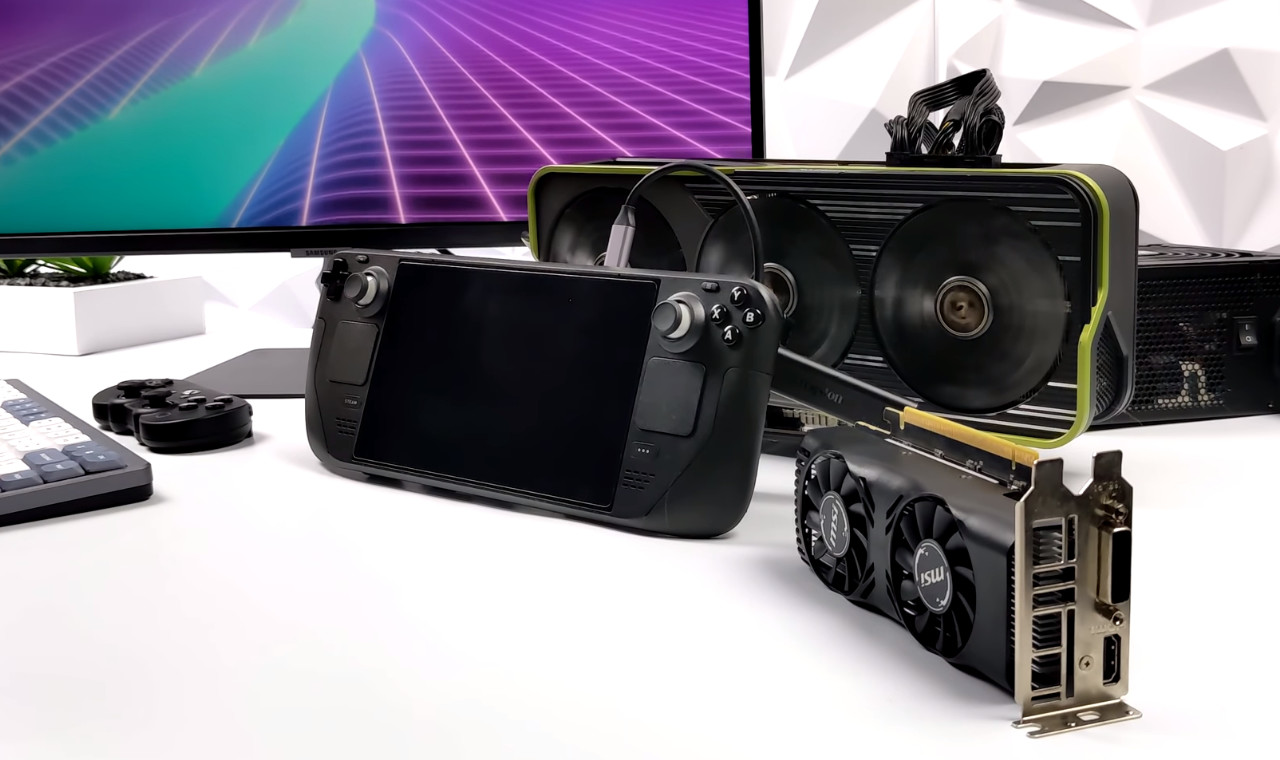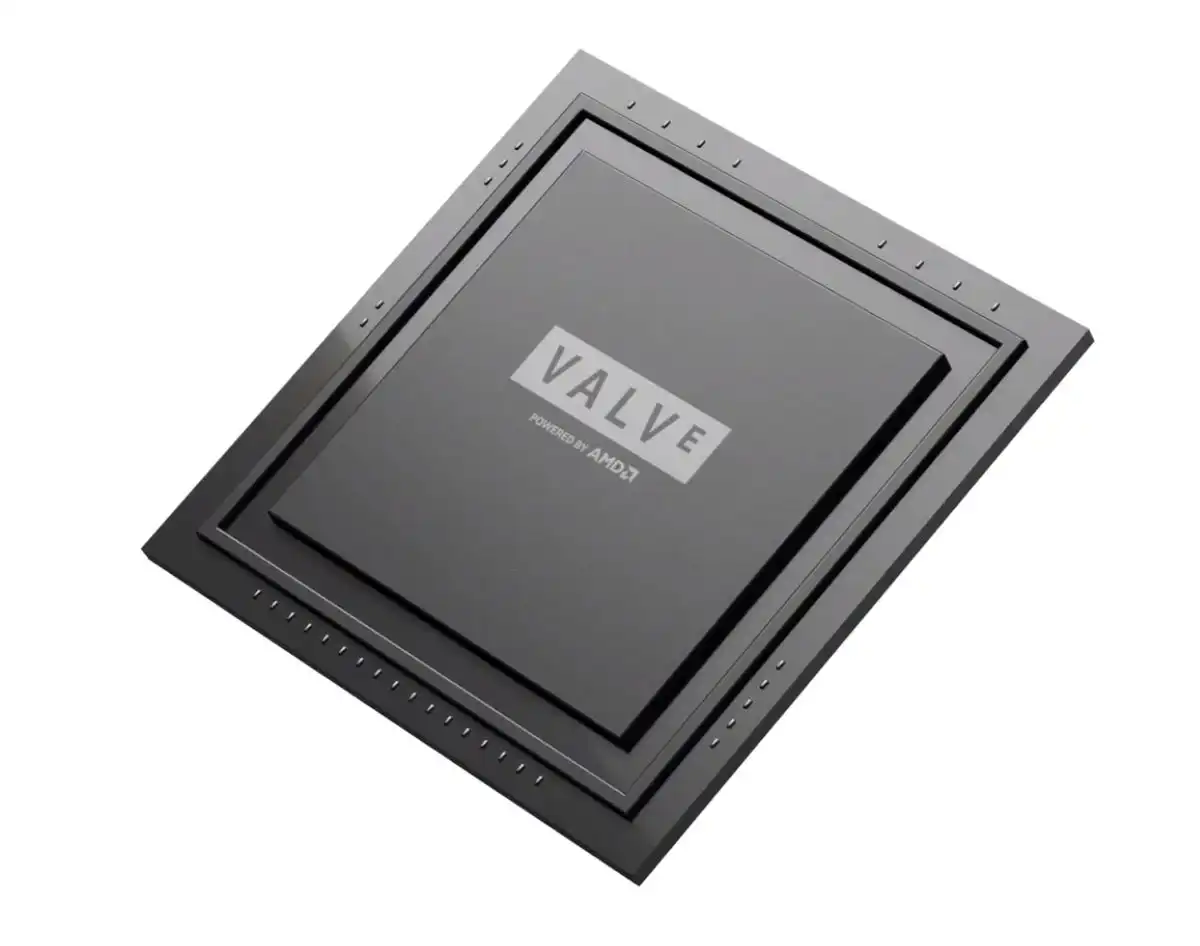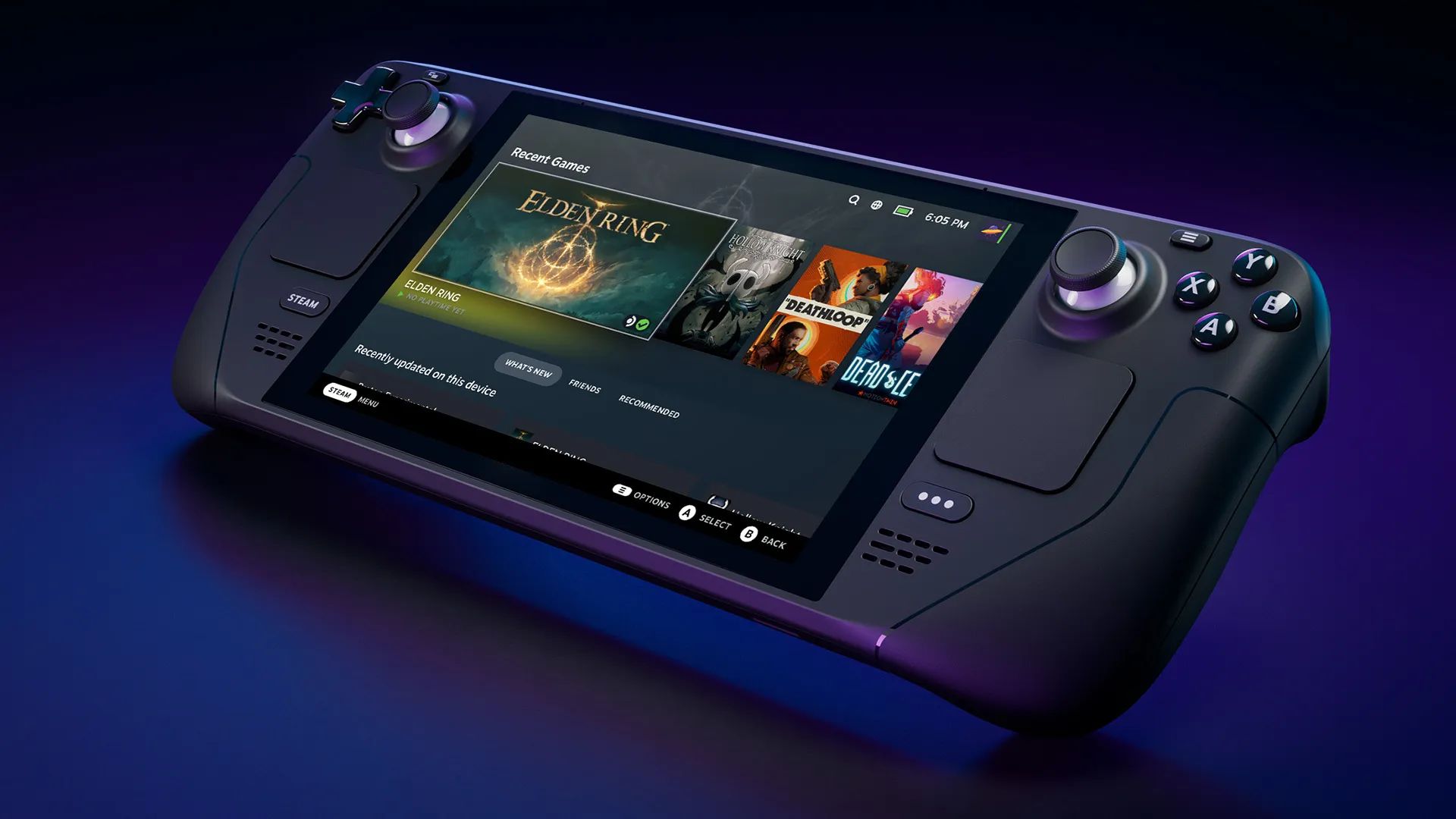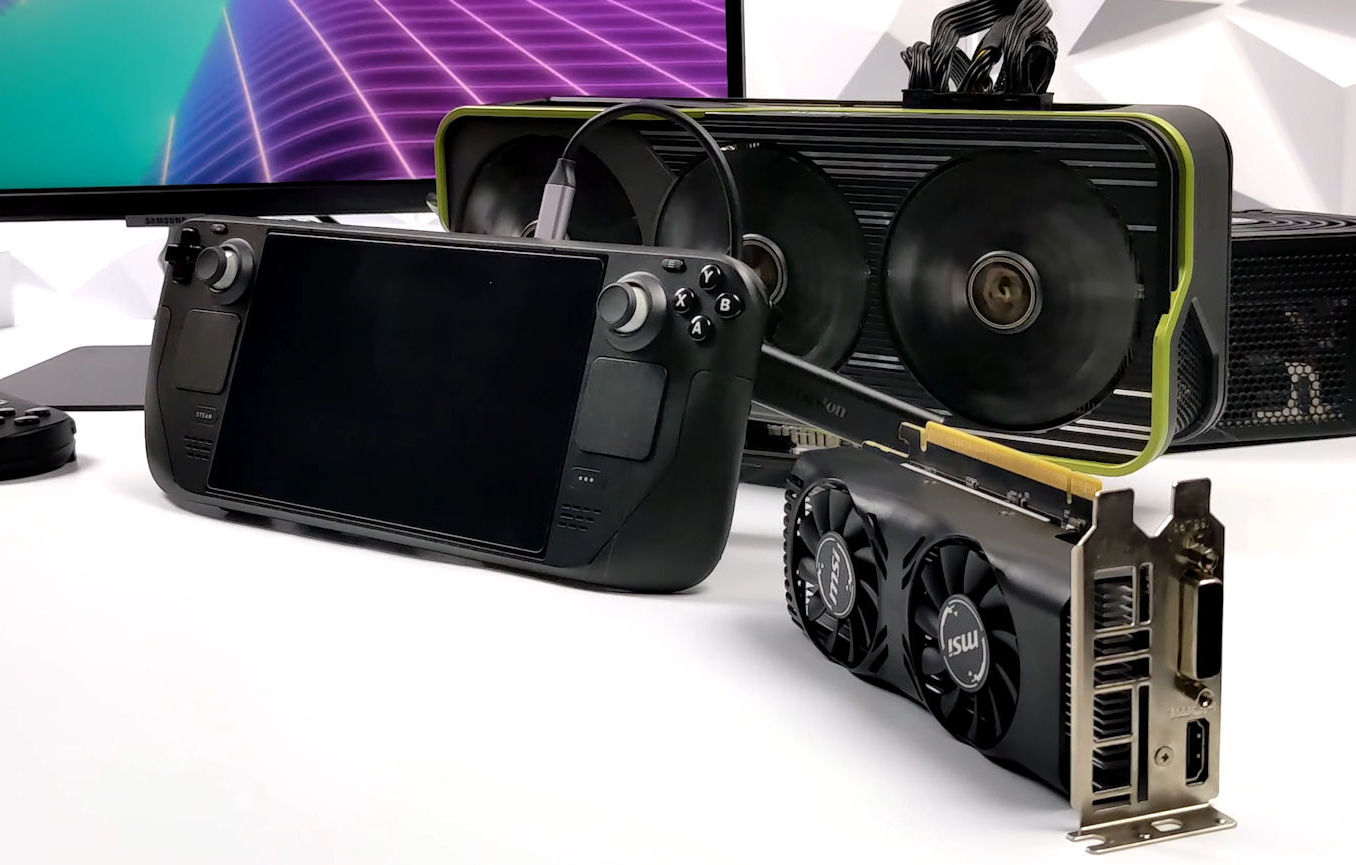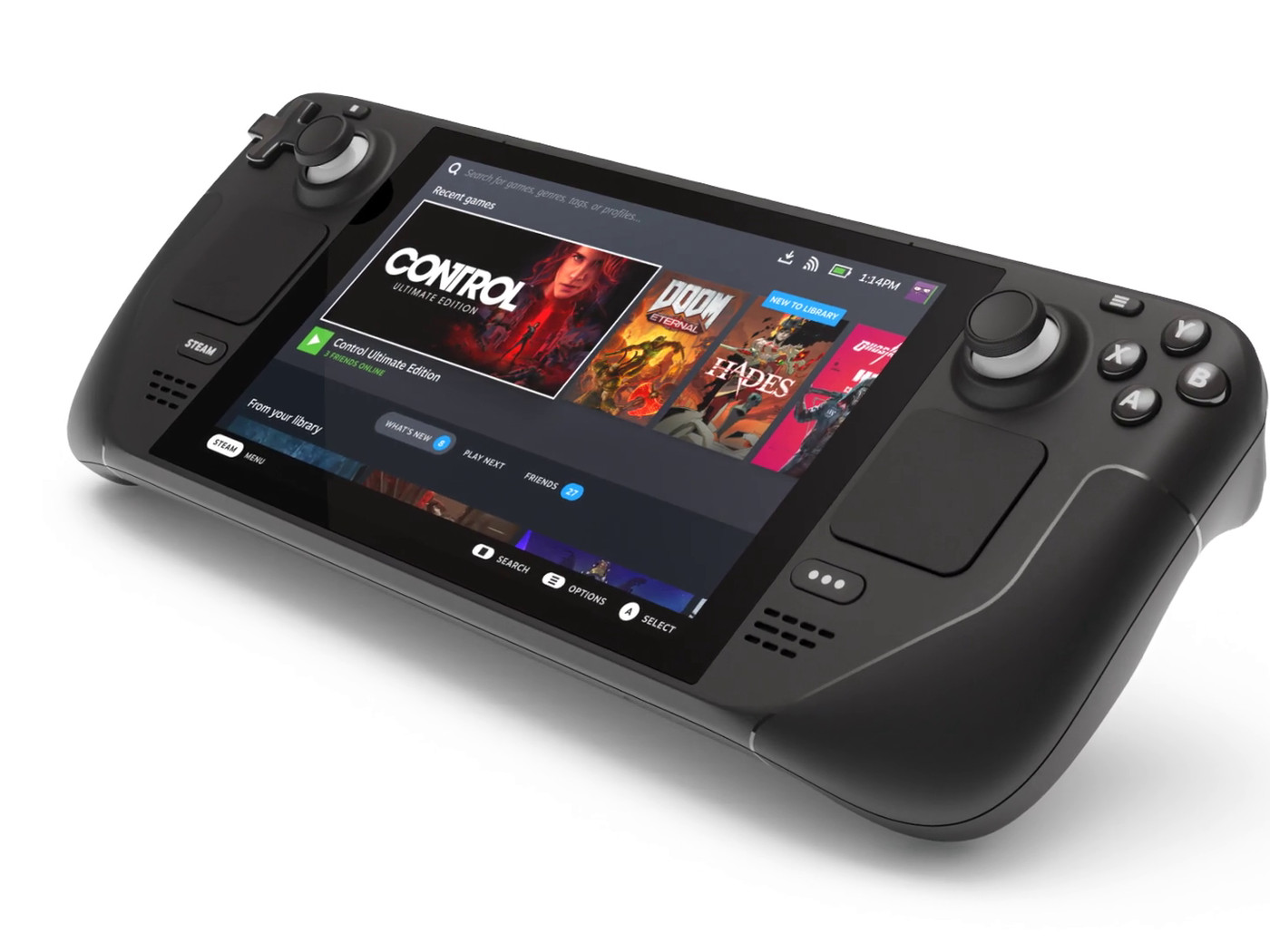Introduction
The gaming industry has seen remarkable advancements in recent years, with consoles becoming more powerful and games more immersive than ever before. One of the latest innovations poised to change the game is the Steam Deck, a handheld console developed by Valve Corporation. Its unique design and impressive specifications are garnering excitement from gamers around the world.
For gamers, a key factor in the performance of any gaming device is the graphics card. The graphics card is responsible for rendering realistic visuals, smooth animations, and breathtaking special effects. It plays a vital role in determining the overall gaming experience, from the crispness of the graphics to the fluidity of the gameplay.
In this article, we will delve into the graphics card featured in the Steam Deck and explore what makes it so special. We will take a closer look at its capabilities, performance, and how it compares to other popular gaming consoles on the market.
The Steam Deck is generating a buzz not only because of its handheld format but also due to the powerhouse of a graphics card it packs under its sleek exterior. Valve selected the AMD RDNA 2 graphics architecture to power their handheld console, making it a force to be reckoned with in the gaming world.
By understanding the inner workings of the AMD RDNA 2 architecture and exploring the performance of the graphics card in the Steam Deck, we can gain insights into the quality of gameplay and the level of graphical fidelity that gamers can expect from this handheld device.
In the following sections, we will discuss the specifics of the graphics card implementation, its performance capabilities, and how it stacks up against its competitors. We will also address any potential limitations of the graphics card and provide a glimpse into the future of gaming with the Steam Deck.
Steam Deck: A Game-Changing Handheld Console
The Steam Deck is revolutionizing the gaming landscape by bringing the power of a high-performance gaming PC to a portable handheld console. Developed by Valve Corporation, the same company that brought us the popular Steam platform, the Steam Deck aims to bridge the gap between PC gaming and handheld consoles.
What makes the Steam Deck so game-changing is its unique combination of hardware and software features. At its core, it is a handheld device with a built-in controller layout similar to traditional gaming consoles. However, it sets itself apart by running a custom version of SteamOS, Valve’s own Linux-based operating system designed specifically for gaming.
The Steam Deck features a stunning 7-inch touchscreen display, allowing gamers to experience their favorite titles in crisp detail. With a resolution of 1280×800 pixels, games come to life with vibrant colors and sharp visuals. The console also supports a high refresh rate of 60Hz, ensuring smooth and fluid gameplay.
In terms of processing power, the Steam Deck is equipped with an AMD APU (Accelerated Processing Unit), combining a quad-core Zen 2 CPU with a powerful RDNA 2 graphics card. This powerful combination ensures that the Steam Deck can handle even the most demanding PC games with ease.
One of the standout features of the Steam Deck is its versatility. It supports various input methods, allowing gamers to play their favorite titles using the built-in controller layout, attach external controllers, or even connect a mouse and keyboard for a more traditional gaming experience.
Furthermore, the Steam Deck is not limited to gaming on its own screen. It can be connected to an external monitor or TV, effectively turning it into a mini gaming PC. This versatility allows gamers to seamlessly transition between playing on the go and enjoying a larger screen experience at home.
The Steam Deck also leverages Valve’s vast library of games available on the Steam platform. With thousands of titles to choose from, gamers can access their existing Steam library on the handheld console, enabling them to enjoy their favorite games wherever they go.
In summary, the Steam Deck is a game-changing handheld console that combines the power of a high-performance gaming PC with the convenience and portability of a handheld device. Its unique features, versatile input methods, and extensive game library make it an enticing option for both PC gamers and console enthusiasts alike.
The Importance of the Graphics Card in Gaming
When it comes to gaming, the graphics card is a fundamental component that significantly impacts the overall gaming experience. As games become more graphically advanced and realistic, the role of the graphics card becomes increasingly crucial.
The graphics card is responsible for rendering and displaying the visuals in a game. It processes complex mathematical calculations to transform digital data into stunning graphics that we see on our screens. This includes everything from character models, environments, special effects, lighting, and textures.
A powerful graphics card can handle these computations swiftly and efficiently, resulting in smooth gameplay with high frame rates and breathtaking visuals. It ensures that the virtual world within a game is vibrant, immersive, and visually captivating.
In addition to enhancing the visual aesthetics, the graphics card also plays a vital role in gameplay performance. It determines how quickly the game responds to player inputs, how smoothly the game runs, and how well the game can handle demanding graphics-intensive scenes without lag or stuttering.
Moreover, the graphics card influences other important aspects of gaming, such as screen resolution, display refresh rate, and the ability to support advanced graphical features like ray tracing and high dynamic range (HDR). These features contribute to a more realistic and immersive gaming experience.
For gaming enthusiasts, having a powerful graphics card is essential for staying competitive in multiplayer games. It allows for faster reaction times, smoother animations, and improved visibility, giving players a competitive edge.
The graphics card also has a significant impact on the longevity of a gaming system. As new games are released with higher system requirements, having a powerful graphics card ensures that your system can handle the latest and most demanding games for years to come, saving you from having to upgrade your hardware frequently.
In summary, the graphics card is an integral and indispensable component in gaming. It not only influences the visual quality of games but also affects performance, responsiveness, and the overall gaming experience. Investing in a powerful graphics card is crucial for gamers who seek to enjoy games with stunning visuals, smooth gameplay, and the ability to play the latest and most graphically demanding titles.
What Makes the Steam Deck Stand Out?
The Steam Deck has garnered significant attention and excitement from gamers worldwide, and it’s not without reason. There are several standout features that set the Steam Deck apart from other handheld consoles on the market.
First and foremost, the Steam Deck offers the power and capabilities of a high-end gaming PC in a portable handheld form factor. With its AMD APU combining a quad-core Zen 2 CPU and an RDNA 2 graphics card, the Steam Deck can handle even the most demanding PC games with ease. This level of performance is unparalleled in the world of handheld gaming consoles, making the Steam Deck a truly unique offering.
Another standout feature of the Steam Deck is its seamless integration with the Steam platform. As the most popular PC gaming storefront, Steam offers a vast library of games with thousands of titles available for purchase. The Steam Deck allows gamers to access their existing Steam library and enjoy their favorite games on the go. This integration gives the Steam Deck a huge advantage over its competitors, as gamers can take their entire gaming library with them wherever they travel.
The Steam Deck also offers a versatile and customizable gaming experience. With its built-in controller layout, players can enjoy games using the traditional handheld console style. However, the Steam Deck goes even further by providing support for external controllers, mouse and keyboard, and even connecting to external displays. This flexibility allows gamers to adapt their gaming experience to their preferences, whether they prefer the handheld format or a more traditional setup.
In terms of hardware, the Steam Deck’s 7-inch touchscreen display stands out. With a resolution of 1280×800 pixels, games come to life with vibrant colors and sharp visuals. The device also supports a high refresh rate of 60Hz, ensuring smooth and fluid gameplay. The display size strikes a balance between portability and immersion, providing an optimal viewing experience for gamers.
Moreover, the Steam Deck’s build quality and ergonomic design contribute to its appeal. It features a comfortable grip, well-placed buttons, and a robust build that feels sturdy and reliable. Additionally, the inclusion of expandable storage options allows gamers to store and access more games, giving them the freedom to choose from a vast library of titles.
Overall, what makes the Steam Deck stand out is its combination of high-performance hardware, seamless integration with the Steam platform, and a versatile gaming experience. It brings the power of a gaming PC, an extensive game library, and the flexibility of customization to the palm of your hands. The Steam Deck is poised to revolutionize handheld gaming and provide gamers with a portable gaming experience like no other.
Unveiling the Graphics Card in Steam Deck: AMD RDNA 2
The graphics card chosen to power the Steam Deck is none other than the AMD RDNA 2, a cutting-edge architecture known for its impressive performance and advanced features. The decision to incorporate AMD RDNA 2 into the Steam Deck speaks volumes about Valve’s commitment to delivering a top-of-the-line gaming experience on a handheld device.
The AMD RDNA 2 architecture has already made a significant impact in the gaming industry, with its implementation in high-end gaming PCs and next-generation consoles. It is praised for its exceptional power efficiency, improved performance per watt, and enhanced graphics rendering capabilities.
One of the standout features of the AMD RDNA 2 architecture is its support for real-time ray tracing. Ray tracing is a rendering technique that simulates the way light interacts with objects in a scene, resulting in more realistic lighting and shadows. The inclusion of ray tracing in the AMD RDNA 2 graphics card allows for more immersive and visually stunning gaming experiences on the Steam Deck.
Another notable feature of the AMD RDNA 2 architecture is its support for variable rate shading (VRS). VRS allows for more efficient rendering by allocating more processing power to areas of the screen that require greater detail, while reducing the level of detail in less demanding areas. This technique enhances performance without sacrificing visual quality, resulting in smoother gameplay and improved frame rates.
Furthermore, the AMD RDNA 2 graphics card in the Steam Deck supports hardware-accelerated DirectX 12 Ultimate features. DirectX 12 Ultimate is a collection of advanced graphics technologies that provide developers with powerful tools to create visually stunning games. These features include hardware-accelerated ray tracing, variable rate shading, mesh shading, and more, all of which contribute to a more immersive and realistic gaming experience.
In terms of performance, the AMD RDNA 2 graphics card in the Steam Deck delivers impressive results. It is capable of running modern AAA games at playable frame rates and resolutions, even while on the go. This performance is a testament to the power and efficiency of the AMD RDNA 2 architecture, allowing gamers to enjoy their favorite titles without compromising on visual quality or gameplay smoothness.
In summary, the inclusion of the AMD RDNA 2 graphics card in the Steam Deck is a game-changer. It brings ray tracing, variable rate shading, and other advanced features to a handheld console, providing gamers with a truly immersive gaming experience. The AMD RDNA 2 architecture’s power efficiency and performance capabilities ensure that the Steam Deck can handle demanding games while delivering stunning visuals and smooth gameplay.
Understanding the AMD RDNA 2 Architecture
The AMD RDNA 2 architecture is a revolutionary graphics architecture developed by AMD that has taken the gaming world by storm. It is the backbone of the graphics card powering the Steam Deck and has garnered praise for its performance, efficiency, and advanced features.
One of the key advancements of the AMD RDNA 2 architecture is its enhanced compute unit design. It features an increased number of compute units with higher clock speeds, resulting in improved computational power and higher performance in gaming workloads. The increased compute units allow for more efficient parallel processing, enabling the graphics card to handle complex tasks with ease.
The AMD RDNA 2 architecture also introduces a new cache hierarchy, including a high-performance L3 cache and improved data access efficiency. This cache system significantly reduces memory latency and increases memory bandwidth, resulting in faster data retrieval and improved overall gaming performance. The cache system plays a crucial role in minimizing bottlenecks and ensuring smooth gameplay even in demanding scenarios.
Furthermore, the AMD RDNA 2 architecture features advanced memory compression technology. This technology optimizes memory usage by compressing texture and color data, reducing the memory footprint and allowing for more efficient use of limited graphics card memory resources. The benefits of memory compression are twofold – it frees up more memory for other tasks and improves memory bandwidth utilization, resulting in improved overall performance.
Another standout feature of the AMD RDNA 2 architecture is its Infinity Cache. This specialized cache acts as a high-performance, low-latency memory pool located directly on the graphics card chip. It aims to alleviate memory bandwidth limitations and improve the efficiency of data processing. The Infinity Cache allows the graphics card to store frequently accessed data close to the compute units, reducing the need to fetch data from the slower VRAM, and resulting in a significant boost in performance.
Additionally, the AMD RDNA 2 architecture supports advanced display technologies, including HDMI 2.1 and DisplayPort 1.4 with Display Stream Compression (DSC). These features enable support for high refresh rates, higher resolutions, and multiple displays, ensuring compatibility with the latest monitors and TVs and providing gamers with stunning visuals and smooth gameplay.
In summary, the AMD RDNA 2 architecture is a technological marvel that brings remarkable improvements in performance, efficiency, and advanced features to the graphics card in the Steam Deck. Its enhanced compute unit design, cache hierarchy, memory compression, and Infinity Cache work together to deliver exceptional gaming experiences with high frame rates, reduced latency, and improved visual fidelity. The inclusion of this architecture in the Steam Deck ensures that gamers can enjoy the latest and most demanding titles without compromising on performance or graphical quality.
Performance and Capabilities of the Graphics Card
The graphics card powering the Steam Deck, the AMD RDNA 2, boasts impressive performance and a multitude of capabilities that elevate the gaming experience to new heights. Its powerful architecture and advanced features ensure that the Steam Deck can handle demanding games while delivering exceptional visuals and smooth gameplay.
When it comes to performance, the AMD RDNA 2 graphics card in the Steam Deck offers a substantial leap forward compared to previous generations. It delivers high frame rates and smooth gameplay, allowing gamers to enjoy their favorite titles with minimal stuttering or lag. The combination of a quad-core Zen 2 CPU and the RDNA 2 graphics card ensures efficient processing and maximum utilization of system resources, resulting in a smooth and responsive gaming experience.
Additionally, the AMD RDNA 2 graphics card supports the latest gaming technologies such as real-time ray tracing, thanks to its hardware-accelerated ray tracing capabilities. Ray tracing brings lifelike lighting and reflections to game worlds, enhancing realism and immersion. With the AMD RDNA 2, the Steam Deck can deliver stunning lighting effects, dynamic shadows, and accurate reflections in real time, further enriching the gaming experience.
The capabilities of the AMD RDNA 2 graphics card extend beyond ray tracing. Its support for variable rate shading (VRS) allows for more efficient rendering by adjusting the level of detail in different parts of the screen. This feature not only improves performance by reducing the required rendering workload but also maintains high visual quality where it matters most, resulting in smoother gameplay and improved frame rates.
In terms of memory and bandwidth, the AMD RDNA 2 graphics card excels. With a high-performance cache system, including the Infinity Cache, it maximizes memory bandwidth efficiency and reduces latency. This ensures that data can be accessed quickly and improves overall gaming performance. The graphics card also supports the latest memory technologies, allowing for larger and faster memory configurations, which further enhances its capabilities.
The AMD RDNA 2 graphics card in the Steam Deck also offers support for advanced display technologies such as HDMI 2.1 and DisplayPort 1.4 with Display Stream Compression (DSC). This enables compatibility with high refresh rates, higher resolutions, and multiple displays, providing gamers with a visually stunning and immersive gaming experience.
Overall, the performance and capabilities of the AMD RDNA 2 graphics card in the Steam Deck make it a formidable force in the handheld gaming console market. Its ability to handle demanding games, support advanced features like ray tracing and variable rate shading, and provide smooth and immersive gameplay ensures that gamers can enjoy a premium gaming experience on the go. With the power of the AMD RDNA 2 graphics card, the Steam Deck is poised to become a game-changer for portable gaming.
Comparing the Steam Deck’s Graphics Card with Other Consoles
When it comes to graphics performance, the Steam Deck’s graphics card, the AMD RDNA 2, stands tall against its console counterparts, offering a level of power and capabilities that rival even the most popular gaming consoles on the market.
Let’s first compare the Steam Deck with the Nintendo Switch, one of the most successful handheld consoles. While the Nintendo Switch features its own custom Tegra X1 graphics processor, the AMD RDNA 2 graphics card in the Steam Deck outperforms it in terms of raw processing power and graphics capabilities. The Steam Deck’s graphics card allows for more detailed visuals, higher resolution, and more advanced graphical effects, providing a more immersive gaming experience.
Next, let’s compare the Steam Deck with the PlayStation 5 and Xbox Series X, the latest generation of consoles. Both the PlayStation 5 and Xbox Series X feature custom AMD RDNA 2 graphics architectures, similar to the Steam Deck. While the power and performance of the Steam Deck’s graphics card may not match that of its console counterparts due to the differences in form factor and power constraints, it still delivers impressive performance for a handheld device. The AMD RDNA 2 graphics card allows the Steam Deck to handle demanding games and supports advanced features like ray tracing and variable rate shading, albeit with potential limitations due to its portable nature.
While it’s important to note that the Steam Deck’s graphics card may not surpass the performance of dedicated gaming consoles, its capability to deliver a high-quality gaming experience in a portable form factor is a feat in itself. The Steam Deck offers the flexibility and convenience of handheld gaming along with the power of a dedicated graphics card, bridging the gap between portable and console gaming.
Furthermore, the Steam Deck’s integration with the Steam platform gives it a significant advantage over other handheld consoles. With access to the vast library of games on Steam, the Steam Deck offers a diverse and extensive collection of titles to choose from, making it a compelling option for gamers.
It’s worth noting that the comparison between the Steam Deck’s graphics card and other consoles should consider factors such as power consumption, thermal constraints, and form factor limitations. The Steam Deck’s portable design necessitates compromises in terms of overall performance when compared to larger, more power-hungry consoles.
In summary, while the Steam Deck’s AMD RDNA 2 graphics card may not surpass the performance of dedicated gaming consoles, it offers an impressive level of graphics power and capabilities for a handheld device. The Steam Deck’s ability to deliver a high-quality gaming experience on the go, its integration with the extensive Steam library, and its unique combination of portability and performance make it a compelling option for gamers seeking a versatile and immersive gaming experience.
Overcoming Potential Limitations of the Graphics Card
While the Steam Deck’s graphics card, the AMD RDNA 2, offers impressive performance for a handheld device, it is important to consider the potential limitations that come with its portable form factor. However, Valve has taken steps to overcome these potential limitations and provide a robust gaming experience on the Steam Deck.
One limitation to consider is the power and thermal constraints of a handheld device. As a portable gaming console, the Steam Deck has to balance performance with power efficiency to ensure a reasonable battery life and prevent overheating. While it may not match the raw power of high-end gaming PCs or dedicated gaming consoles, the AMD RDNA 2 graphics card in the Steam Deck is optimized to deliver excellent performance within the device’s thermal and power capabilities.
To overcome potential thermal constraints, Valve has implemented effective cooling solutions in the Steam Deck. The device features an innovative cooling system that efficiently dissipates heat, allowing the graphics card to operate at optimal temperatures for extended gaming sessions. This thoughtful design ensures that gamers can enjoy a smooth and uninterrupted gaming experience without worrying about heat-related performance issues.
Another potential limitation of the graphics card in a handheld device is the smaller display size compared to traditional gaming setups. While the Steam Deck’s 7-inch touchscreen display may not match the size of larger monitors or TVs, it still provides a vibrant and immersive gaming experience. The display’s high resolution and support for a 60Hz refresh rate guarantee sharp visuals and smooth animations, enabling gamers to enjoy their favorite titles with exceptional clarity and fluidity.
It’s also important to note that while the AMD RDNA 2 graphics card in the Steam Deck offers support for advanced features like ray tracing and variable rate shading, the implementation of these features may be optimized for the device’s hardware limitations. Valve has likely made careful trade-offs to ensure a balance between visual quality and performance. While the graphics card may not deliver the same level of performance as high-end gaming PCs or dedicated consoles, it still manages to provide an impressive gaming experience on a portable handheld device.
Valve’s commitment to optimizing the Steam Deck, both in terms of its hardware and software, ensures that the potential limitations of the graphics card are mitigated to provide the best possible gaming experience. Through careful design and engineering, Valve has created a handheld console that delivers impressive graphics performance while maintaining the power efficiency and thermal management required for a portable device.
In summary, while the graphics card in the Steam Deck may have some limitations due to its portable form factor, Valve has taken significant steps to minimize these limitations. The device’s cooling system, display quality, and optimized implementation of advanced features ensure a high-quality gaming experience within the constraints of a handheld device. By addressing these potential limitations, Valve has succeeded in creating a handheld console that offers impressive graphics performance and immersive gameplay for gaming enthusiasts.
The Future of Gaming with Steam Deck’s Graphics Card
The inclusion of the AMD RDNA 2 graphics card in the Steam Deck opens up exciting possibilities for the future of gaming. With its powerful architecture and advanced features, the Steam Deck’s graphics card sets the stage for a new era of portable gaming and has the potential to redefine the landscape of handheld consoles.
One of the main advantages of the Steam Deck’s graphics card is its scalability. As technology continues to advance, we can expect future iterations of the Steam Deck to feature even more powerful versions of the AMD RDNA graphics architecture. This means that future Steam Deck models could offer even greater performance, allowing for more graphically demanding games and richer gaming experiences.
The potential for updates and optimizations is another factor that underscores the future of gaming with the Steam Deck’s graphics card. Valve has a track record of continually improving and optimizing their products, and we can expect the same for the Steam Deck. As the graphics card technology evolves, Valve can release firmware and software updates that further enhance the performance and capabilities of the graphics card. This means that gamers can expect a steady stream of improvements and optimizations that will enhance their gaming experience on the Steam Deck.
The Steam Deck’s graphics card also opens up doors for potential partnerships and collaborations within the gaming industry. Developers and publishers may be inspired by the Steam Deck’s capabilities and start creating games specifically tailored for its unique hardware. This could lead to a new wave of innovative and immersive gaming experiences designed specifically for handheld play, further pushing the boundaries of portable gaming.
Furthermore, the Steam Deck’s powerful graphics card could pave the way for cloud gaming services on the device. With the ability to handle graphically demanding games, the Steam Deck could potentially support cloud gaming platforms, allowing gamers to stream high-quality games directly to the device without the need for local processing power. This would further expand the gaming library available to Steam Deck owners, offering a vast array of games to choose from.
Looking even further into the future, the Steam Deck’s graphics card could potentially influence the development of other handheld consoles. As other companies take note of the success and capabilities of the Steam Deck, they may look to incorporate similar high-performance graphics cards into their own handheld devices. This could lead to increased competition and innovation in the handheld gaming market, ultimately benefiting gamers with more powerful and feature-rich handheld consoles.
In summary, the future of gaming with the Steam Deck’s graphics card is bright and full of potential. With scalability, updates, and potential partnerships in mind, the Steam Deck is poised to become a force to be reckoned with in the world of portable gaming. As technology continues to advance, the Steam Deck’s graphics card will continue to push the boundaries of what is possible in handheld gaming, offering gamers an ever-improving and immersive gaming experience.
Conclusion
The Steam Deck, with its powerful AMD RDNA 2 graphics card, has ushered in a new era of handheld gaming. Its unique combination of high-performance hardware, seamless integration with the Steam platform, and versatile gaming experience make it a standout among other handheld consoles.
The AMD RDNA 2 graphics card, renowned for its impressive performance and advanced features, has pushed the boundaries of what is possible in a handheld device. With its support for real-time ray tracing, variable rate shading, and other cutting-edge technologies, the Steam Deck delivers stunning visuals and immersive gameplay on the go.
While it may not match the raw power of dedicated gaming consoles or high-end gaming PCs, the Steam Deck’s graphics card offers a level of performance that rivals them within the constraints of its portable form factor. Valve has addressed potential limitations such as power and thermal management, ensuring a robust gaming experience without compromising the device’s portability.
The integration of the Steam Deck with the Steam platform gives gamers access to a vast library of games, allowing them to enjoy their existing collection and explore new titles wherever they go. The versatility of the Steam Deck’s input methods and its ability to connect to external displays further enhance the gaming experience, catering to a wide range of preferences and play styles.
Looking to the future, the Steam Deck’s graphics card is poised to drive innovation in the handheld gaming market. With scalability, updates, and potential partnerships, the Steam Deck has the potential to redefine the landscape of portable gaming and inspire new collaborations within the industry.
In conclusion, the Steam Deck, powered by the AMD RDNA 2 graphics card, offers a unique and high-quality gaming experience in a portable handheld format. Its impressive performance, seamless integration with the Steam platform, and adaptable design make it a game-changer for gamers seeking a versatile and immersive gaming experience on the go. As the future unfolds, the Steam Deck’s graphics card sets a new standard for what is possible in the world of handheld consoles, promising an exciting future for portable gaming.







